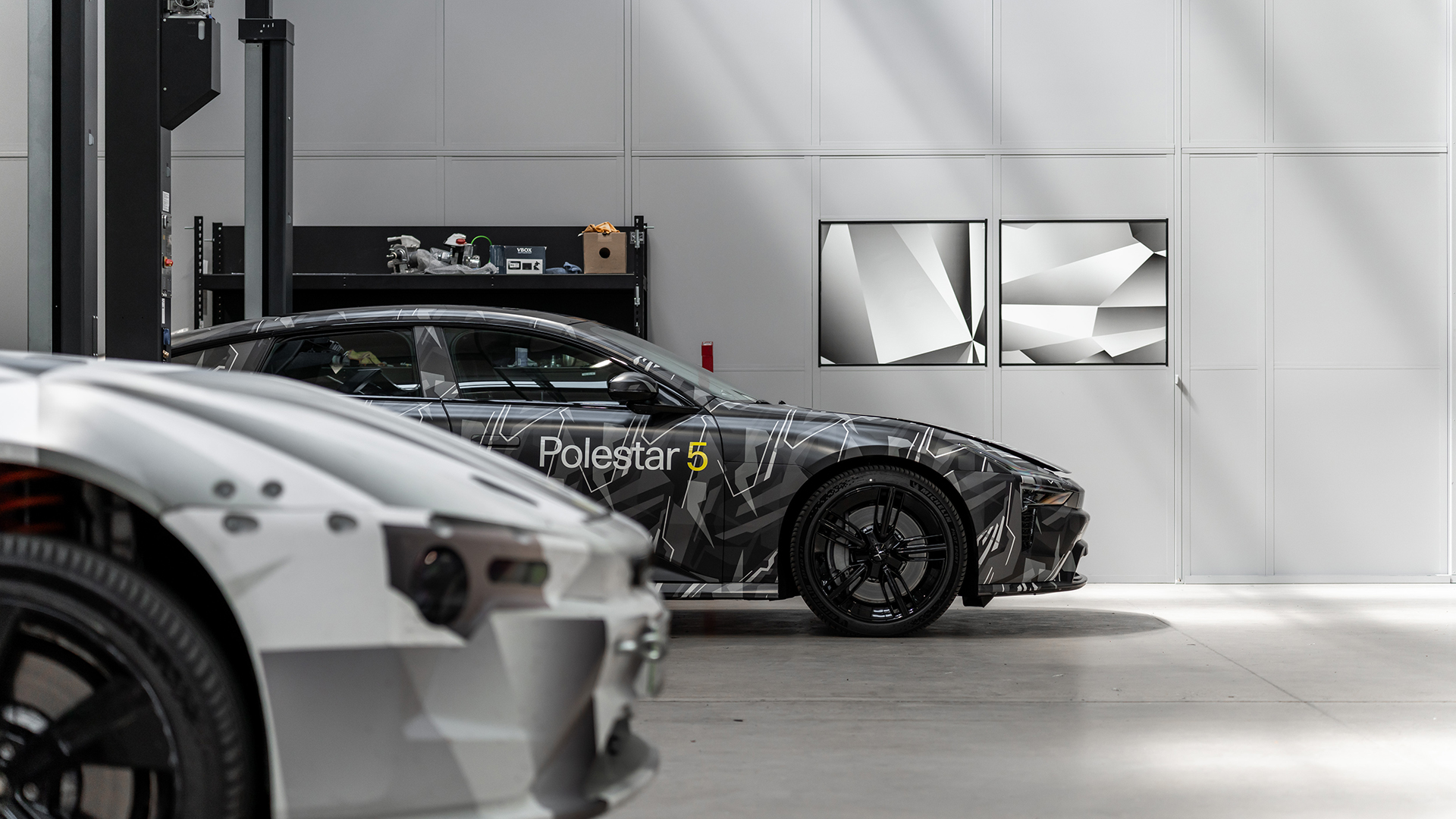Polestar just showed off charging tech even Tesla can't rival
Polestar 5 fitted with StoreDot XFC cells charges 70% in under 10 minutes

When it comes to the best EVs, one of the biggest points of contention is just how long charging your electric car can take. At-home charging is usually around a mere 7kW, taking many hours to charge a battery. Charging outstations are faster (and pricier), with Tesla's SuperCharger network, in particular, lauded for its up-to-250kW maximum charging rate.
But Polestar just showed off a charging technology that even Tesla can't rival. A Polestar 5 with StoreDot's XFC cells on board – described by the company as a "reinvention of the battery chemistry, by replacing traditional li-ion with patented bio-inspired active-material nanoparticles" – charged 70% of a battery in under 10 minutes (77kW capacity, peaking at 370kW power delivery).
We reported late last year that the Polestar 5 could be 'the fastest-charging EV yet', and this next step in the car's progress shows off what could be a good thing for all future EV owners – if the technology is more widely adopted. Other companies are looking at more radical solutions, such as Nio, which offers a full battery 'drop and swap' station change system.
None of this is quite consumer reality worldwide yet, however, with Nio yet to open in the UK, and StoreDot and Polestar not on the market anywhere. There are alternative rivals incoming, too, including Tesla's 615kW SuperChargers of the future which could be a total game-changer – not that any car can benefit from those higher-capacity charging rates just yet (350kW is the maximum on-sale, available on the latest Porsche Taycan, for example).
Battery technologies are integral to so much of the technology we own. And with nickel and lithium in such high demand, not to mention being difficult to recycle and potentially problematic to source, alternatives are the next logical solution. Even the best phones are evolving, as a separate example, with the Honor Magic 6 delivering a silicon carbon cell that's more abundant to resource but also offers a higher energy density.
The car industry has to evolve too, especially as many governments and automakers have leveraged away from traditional combustion engine production. Sure, hydrogen fuel cell is still a viable option – and BMW, among others, continue to invest in that – but with the future seemingly set to electric, we need all the battery technology advances, (safe) faster-charging and other infrastructures to improve fast. Polestar and StoreDot represent one of the first steps in that evolution happening.
Get all the latest news, reviews, deals and buying guides on gorgeous tech, home and active products from the T3 experts

Mike is T3's Tech Editor. He's been writing about consumer technology for 15 years and his beat covers phones – of which he's seen hundreds of handsets over the years – laptops, gaming, TV & audio, and more. There's little consumer tech he's not had a hand at trying, and with extensive commissioning and editing experience, he knows the industry inside out. As the former Reviews Editor at Pocket-lint for 10 years where he furthered his knowledge and expertise, whilst writing about literally thousands of products, he's also provided work for publications such as Wired, The Guardian, Metro, and more.
